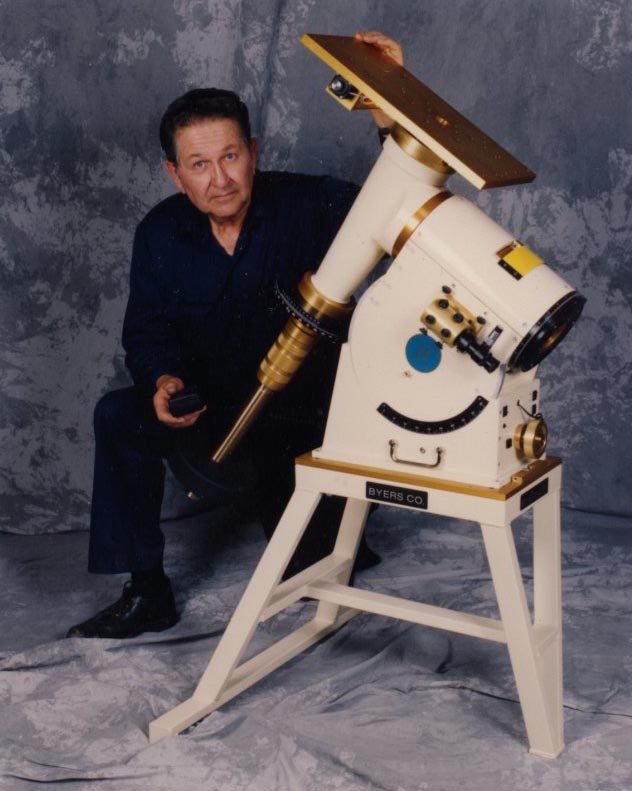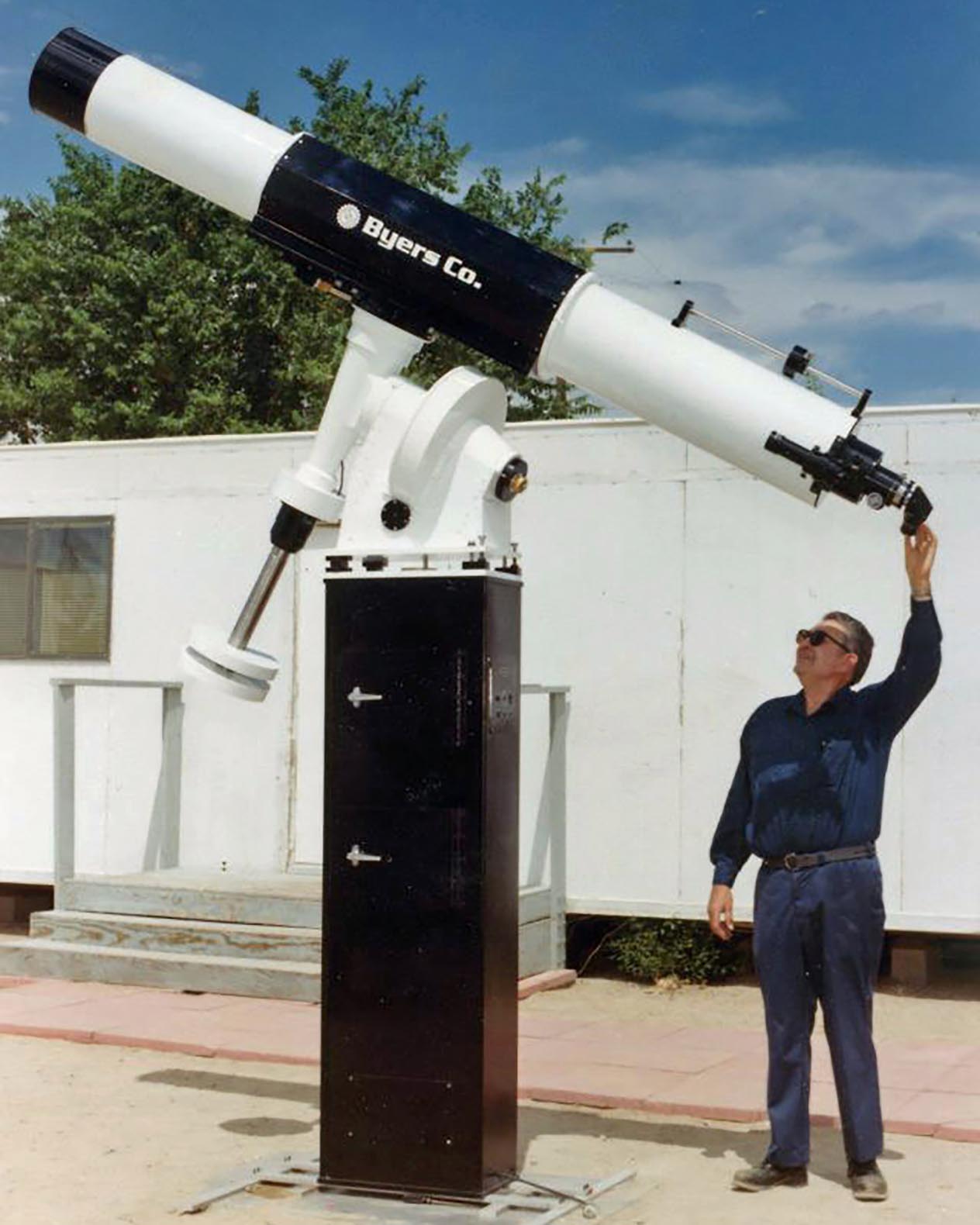History
In the 1950's, while Ed Byers was working for the railroad as an engineer, he started building himself a 16" Cassagrain Telescope.
He quickly discovered that he could not buy any worm gears that would work well to allow the telescope to track the stars.
Large observatories had the budgets necessary to buy high-precision worm gear drives from large gear manufacturers, which were designed by skilled engineers.
Amateurs, on the other hand, were limited to modifying or adapting ill-suited products.
Byers realized the need to supply affordable drive systems for smaller telescopes.
Using his skills as a machinist and his talents as a design engineer, he dedicated over a year developing several different gear systems, having the correct number of teeth that could cancel the Earth’s rotation by using only two clock reduction gears and a synchronous motor.
Edward R. Byers Company was born!
When Byers Company began, it was in the one-car garage of his small house, but it quickly moved to a larger workshop in the back yard of the same house.
Later, in the 1970's he moved to an old furniture store and spent the next 50 years at that location. Many people have visited him there!
Ed Byers was the first to offer true sidereal rate tracking to the amateur astronomy community.
Byers drives are known all over the world for their precision, accuracy, quality and even their beauty.
The larger, research quality drive systems have been known to have no detectable error.
When Byers began, each one was crafted by Ed Byers himself, creating unique mountings that are considered the “gold standard” of engineering and craftsmanship.
In addition to the amateur market, Byers made scientific instruments for Observatories and Universities all over the world as well as for NASA, Jet Propulsion Laboratories, Lockheed, and other government agencies.
Over the years, Ed Byers was prolific and demanding inventor, with many patents to his name.
If there was a problem that needed to be solved, he set out to solve it!
He designed the simple and reliable spring-loaded slip-clutch that is still used today to permit the telescope to be safely and smoothly moved to new objects without disengaging the gear.
These clutches have been used on thousands of drives and mountings around the world. Their flawless performance has been unequalled, requiring no change in design for over sixty years.
Since telescopes and their drive systems are often subject to extreme temperature changes, he invented a temperature compensation system that simultaneously
firmly supports the worm and eliminates backlash in all conditions.
Byers has made every effort to provide the highest quality and the lowest price.
As a result, thousands of amateur astronomers, as well as high-end customers such as Observatories and research institutions, have benefited.
 Menu
Menu

